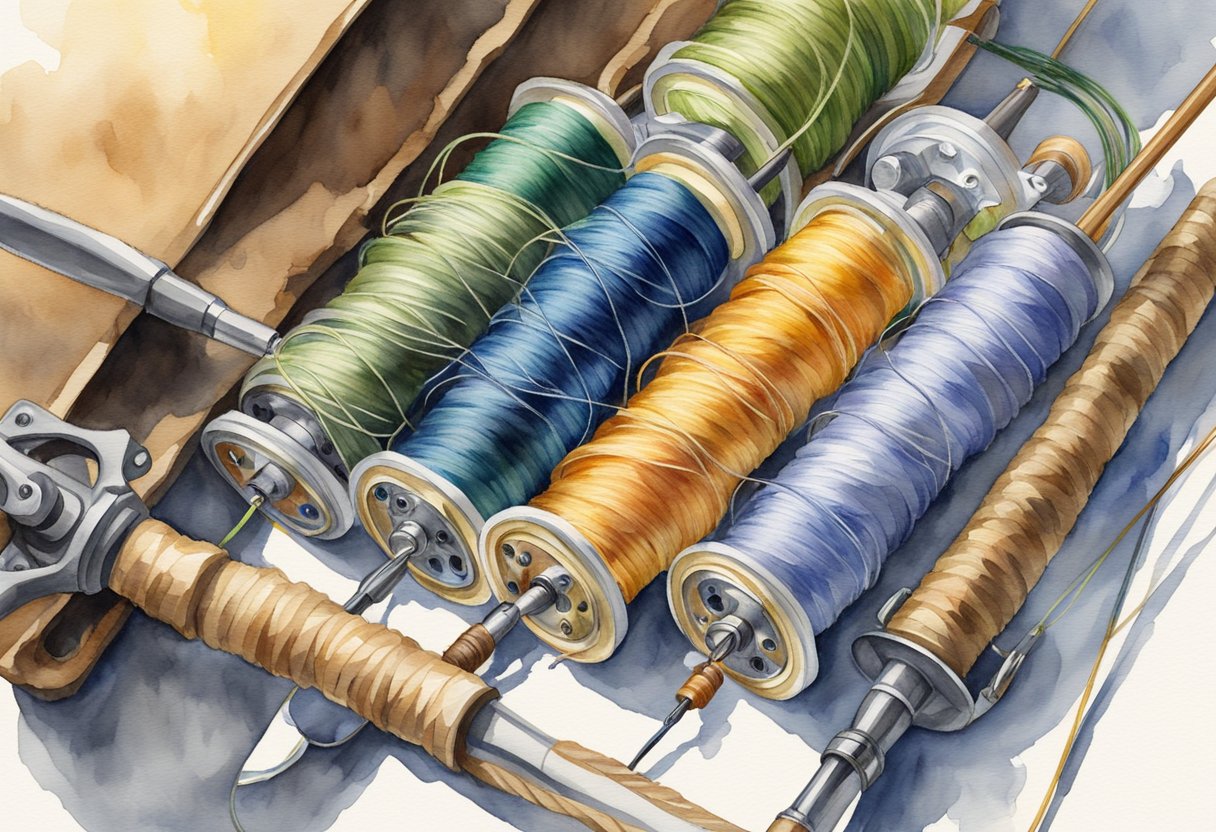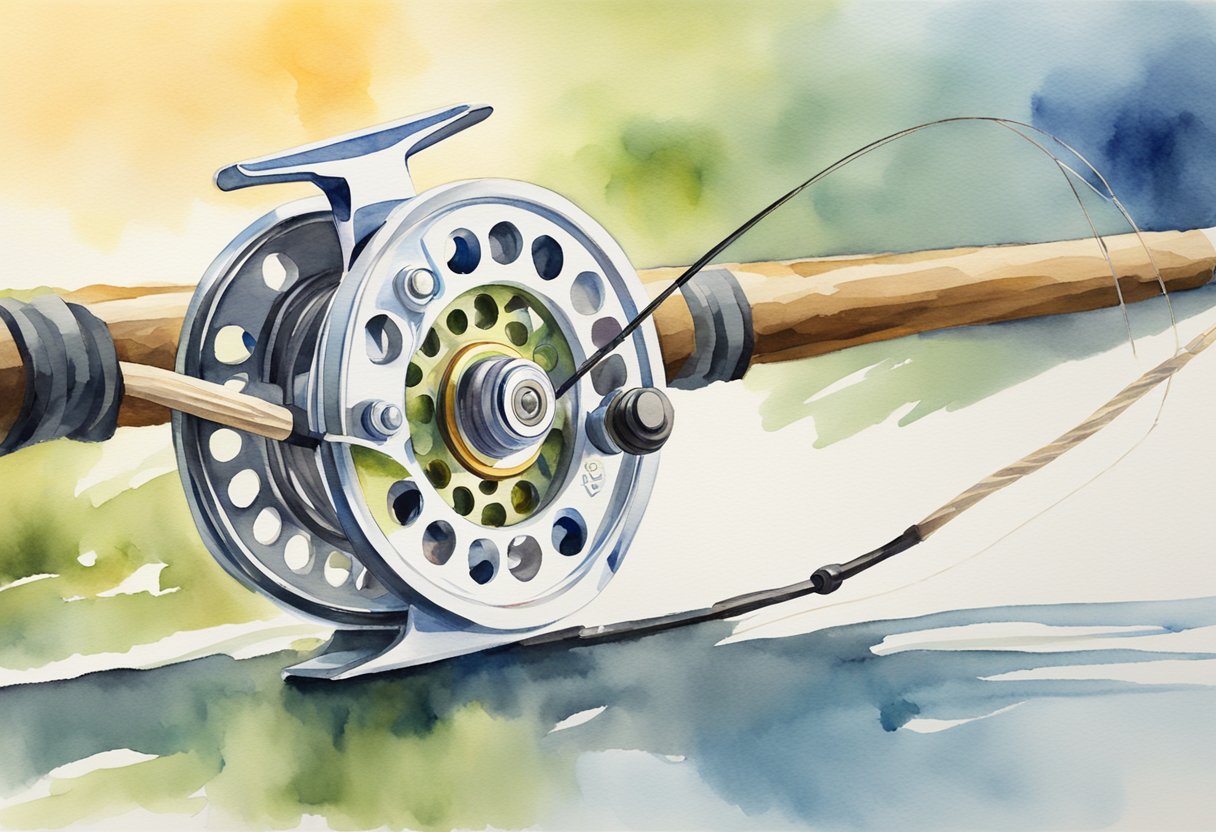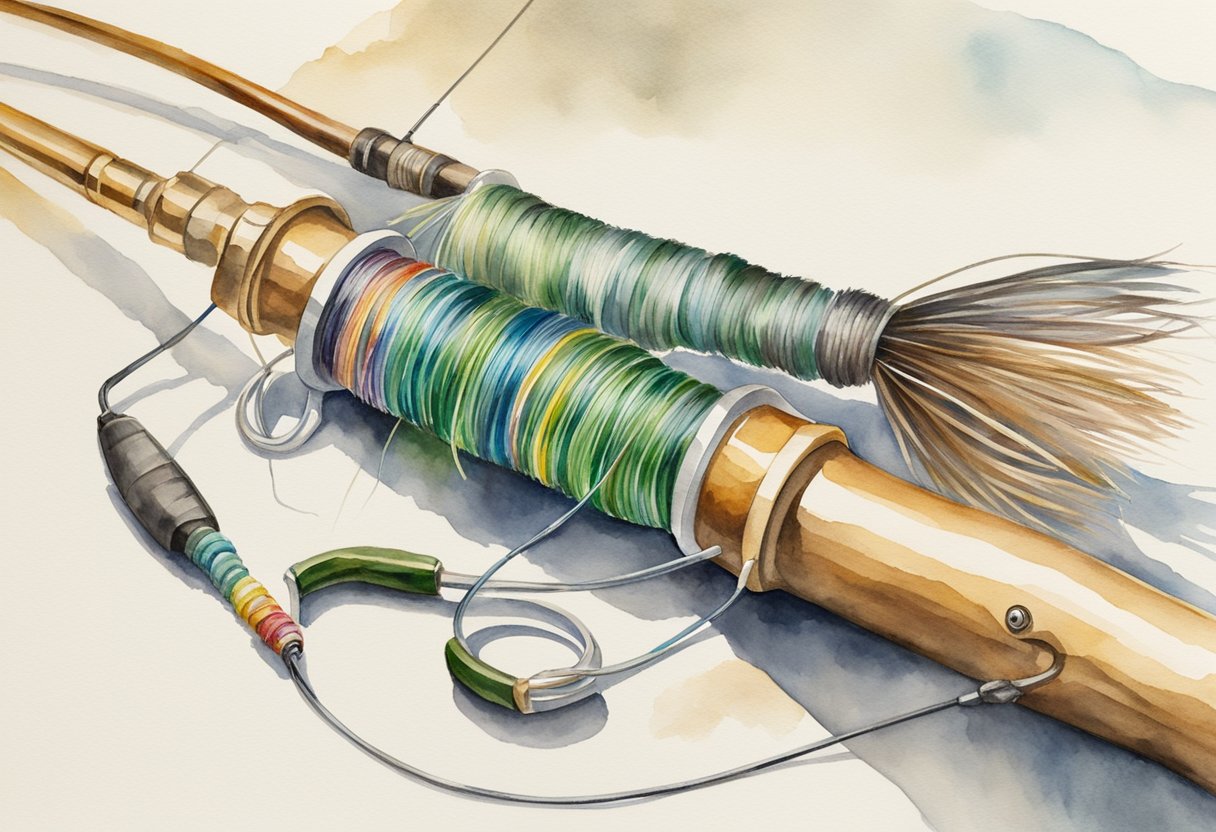Fly fishing is a popular hobby that many people enjoy. However, for beginners, setting up a fly fishing line can be quite challenging. It’s important to have a good understanding of the equipment and techniques involved in order to get the most out of this activity.

When it comes to fly fishing, the equipment is quite different from other types of fishing. The fly rod, reel, and line are all specialized pieces of equipment that are designed specifically for this type of fishing. Understanding how these pieces work together is crucial for setting up a successful fly fishing line.
Setting up a fly fishing line involves a number of steps, from attaching the backing line to the reel to connecting the fly line to the backing. Each step requires careful attention to detail and a good understanding of the equipment involved. With a little practice and patience, however, beginners can quickly learn how to set up a fly fishing line and start enjoying this fun and rewarding hobby.
Key Takeaways
- Understanding the equipment is crucial for setting up a successful fly fishing line.
- Setting up a fly fishing line involves several steps that require attention to detail.
- Beginners can quickly learn how to set up a fly fishing line with practice and patience.
Understanding Fly Fishing Equipment

Fly fishing is a unique type of fishing that requires specific equipment to be successful. Understanding the equipment needed for fly fishing is essential for beginners and experienced anglers alike. Here are the key components of a fly fishing setup:
Fly Fishing Rod and Reel
A fly fishing rod and reel are the foundation of your fly fishing setup. The rod is used to cast the line and the reel is used to retrieve the line. The type of rod and reel you choose will depend on the type of fishing you plan to do, the size of the fish you are targeting, and your personal preferences.
Types of Fly Fishing Lines
There are different types of fly fishing lines available, including floating, sinking, and intermediate lines. Floating lines are the most commonly used and are ideal for fishing on the surface of the water. Sinking lines are used for fishing deeper in the water, while intermediate lines are used for fishing just below the surface.
Additional Fly Fishing Gear
In addition to a rod and reel, there are other pieces of gear that are essential for fly fishing. These include a hat, waders, and tackle. A hat is important for protecting your face and eyes from the sun, while waders allow you to fish in the water without getting wet. Tackle includes items such as flies, leaders, and tippets.
Flies and Fishing Techniques
Flies are the lures used in fly fishing and come in different types, including dry flies, nymphs, and streamers. The type of fly you use will depend on the fish you are targeting and the fishing technique you are using. For example, dry flies are used for fishing on the surface of the water, while nymphs are used for fishing deeper in the water.
When it comes to fishing techniques, there are different ways to present the fly to the fish. This includes casting the fly, which involves using the rod to cast the line out onto the water. It also includes the fly presentation, which involves making the fly look like natural food to the fish.
Overall, understanding the equipment needed for fly fishing is essential for success. With the right gear and techniques, anglers can catch a variety of fish in different locations.
Setting Up a Fly Fishing Line

Fly fishing is a popular hobby that requires patience, skill, and a good set up. Setting up a fly fishing line involves several steps, including knot tying, rigging, spooling, and line setup.
Knots and Rigging
One of the most important aspects of setting up a fly fishing line is knot tying. The arbor knot is commonly used to attach the backing line to the reel, while the nail knot is used to connect the leader to the fly line. Other knots, such as the clinch knot, albright knot, and improved clinch knot, can be used for attaching the fly to the leader. Rigging involves setting up the leader and tippet, which should be matched to the size of the fly and the fish being targeted.
Spooling and Line Setup
Spooling involves winding the backing line onto the reel, followed by the fly line. The backing line should be attached to the centre of the reel using a strong arbor knot. The fly line can be attached to the backing line using a loop-to-loop connection or a nail knot. The weight forward line is a popular choice for fly fishing, as it allows for accurate casting and fly presentation.
Choosing the Right Fly and Presentation
Choosing the right fly and presentation is crucial for successful fly fishing. The size and type of fly should be matched to the fish being targeted and the environment in which they are found. The presentation of the fly should be natural and mimic the movement of real insects or baitfish.
Casting and Fishing Techniques
Casting is a skill that requires practice and patience. The angler should use a smooth and controlled motion to cast the line, aiming for accuracy and distance. Fishing techniques will vary depending on the environment and the fish being targeted. In stillwater environments, the angler should use a slow and steady retrieve, while in rivers, the angler should use a drifting technique to mimic the movement of the current.
Fly Fishing in Different Environments
Fly fishing can be enjoyed in a variety of environments, including rivers, lakes, and saltwater. Each environment presents its own challenges and requires different techniques and equipment. In the UK, fly fishing is popular in rivers and stillwater environments, with trout and salmon being the most commonly targeted species. Saltwater fly fishing is also gaining popularity, with anglers targeting a variety of species including bonefish, tarpon, and permit.
Overall, setting up a fly fishing line requires attention to detail and a good understanding of the equipment and techniques involved. With practice and patience, beginners can learn to enjoy the sport and improve their skills over time.
Frequently Asked Questions
What is the best way to set up a fly fishing line for trout?
When setting up a fly fishing line for trout, it’s important to choose the right line weight and length for the type of fishing you will be doing. A weight-forward floating line is a good choice for most trout fishing situations, as it provides good accuracy and control. The length of the line should be matched to the length of your rod, typically between 8 and 9 feet. Make sure to attach the backing, fly line, leader, and tippet in the correct order.
How do you rig a fly line for nymphing?
Nymphing is a popular technique for catching trout and other fish in rivers and streams. To rig a fly line for nymphing, use a weight-forward floating line with a long leader and tippet. Attach a strike indicator to the leader to help detect strikes, and add weight to the leader to get the fly down to the desired depth. Tie a nymph fly onto the tippet using a knot that provides good strength and allows the fly to move naturally in the water.
What is the proper way to tie a fly fishing line?
Tying a fly fishing line requires a few basic knots. The most important knots are the backing-to-reel knot, the backing-to-fly line knot, the fly line-to-leader knot, and the leader-to-tippet knot. It’s important to tie these knots correctly and test them before fishing to ensure they are strong and secure. There are many resources available online and in books that provide detailed instructions on how to tie these knots.
Should a fly fishing reel be set up for left or right-handed casting?
The answer to this question depends on the angler’s preference. Some anglers prefer to cast with their dominant hand, while others prefer to reel with their dominant hand. Most reels can be set up for either left or right-handed casting, so it’s important to choose the setup that feels most comfortable and natural for you.
What is the purpose of fly line backing and how much should be used?
Fly line backing is a thin, strong line that is attached to the fly reel before the fly line. Its purpose is to provide extra line length and to prevent the fly line from running out completely if a fish takes a long run. The amount of backing needed depends on the size of the reel and the weight of the fly line. As a general rule, use enough backing to fill the reel to within 1/8 inch of the spool’s edge.
How do you properly cast a fly rod for fly fishing?
Casting a fly rod requires a few basic steps: grip the rod properly, make a back cast, wait for the line to straighten, and make a forward cast. It’s important to use a smooth, fluid motion and to stop the rod abruptly at the end of each cast to prevent the line from crashing into the water. Practice casting in an open area before fishing to improve your technique and increase your chances of success on the water.